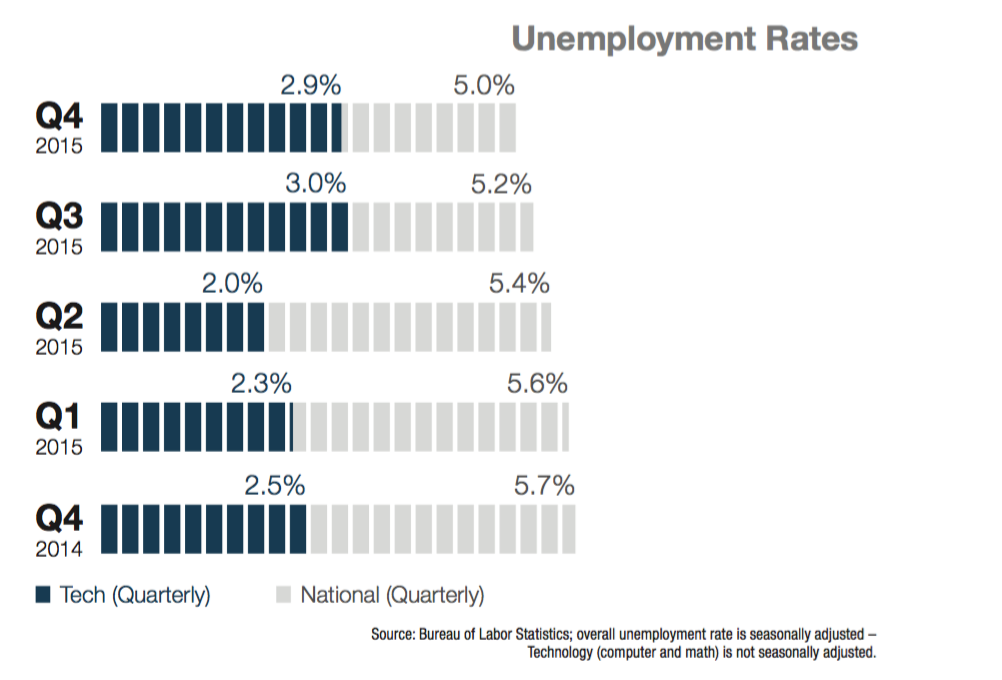The technology industry’s unemployment rate edged downward in the fourth quarter of 2015, hitting 2.9 percent—a tenth of a percentage point down from the third quarter of the year, according to the U.S. Bureau of Labor Statistics (BLS). Although that’s higher than earlier in 2015, when the unemployment rate in tech dipped as low as 2.0 percent, it’s still better than the overall U.S. labor market, where the unemployment rate hit 5.0 percent in the fourth quarter. In the fourth quarter, a number of technology segments monitored by the BLS saw a notable decrease in unemployment. For example, the unemployment rate for Web developers fell from 5.10 percent in the third quarter to 4.40 percent in the fourth; for computer systems analysts, the dive was even steeper, from 3.80 percent to 1.80 percent during the same timeframe. Network systems administrators, software developers, and computer & information systems managers likewise saw decreases. For a few other professions, unemployment rose. Computer support specialists saw their joblessness rate rise from 4.20 percent in the third quarter to 5.30 percent in the fourth; programmers’ rate bumped from 2.60 percent to 3.20 percent. After two quarters of steady job losses, computer and electronic-product manufacturing experienced a slight increase of 300 jobs. Despite that rise, the segment continues to struggle.

Preliminary BLS data suggests the total average layoffs and discharges for October and November, the latest months for which numbers are available, were 427,000 and 416,000, respectively. That’s an increase from the third quarter, when average layoffs and discharges totaled 363,000 per month, and roughly in line with the second quarter, when average layoffs and discharges totaled 421,700 per month. In the fourth quarter of 2014, by comparison, layoffs and discharges averaged 450,300 per month. The BLS estimates voluntary quits among tech pros at 519,000 and 500,000 in October and November, respectively, the latest months for which numbers are available. That is parallel with the third and second quarters of the year, when voluntary quits averaged 505,000 and 510,700 per month, respectively. Those numbers suggest that technology professionals continue to feel positively enough about the overall health of the economy to leave their current positions in search of better opportunities. Other pros also choose to pursue freelancing and contracting opportunities. In sum, the technology segment closed out the year with low unemployment for many segments, and signs that technology professionals remain upbeat about their prospects. From an employer perspective, that means continuing pressure to offer competitive salaries and perks to attract the necessary talent.


